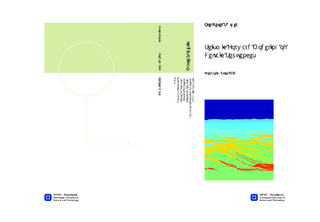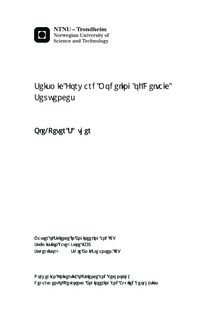| dc.contributor.advisor | Johansen, Ståle Emil | nb_NO |
| dc.contributor.author | Sæther, Ole-Peter | nb_NO |
| dc.date.accessioned | 2014-12-19T12:17:25Z | |
| dc.date.available | 2014-12-19T12:17:25Z | |
| dc.date.created | 2013-09-16 | nb_NO |
| dc.date.issued | 2013 | nb_NO |
| dc.identifier | 648681 | nb_NO |
| dc.identifier | ntnudaim:9444 | nb_NO |
| dc.identifier.uri | http://hdl.handle.net/11250/240102 | |
| dc.description.abstract | The seismic forward modeling is a useful tool to predict the seismic response from a knowngeological model. A seismic forward modeling process contains two main steps, a modelbuilding step and a seismic forward realization part. The geological model may be builtfrom scratch or an interpretation of some real seismic might be used as an input to theforward seismic realization algorithm.In this work both the steps in a seismic forward modeling process are done. The firststep is to build the geological model, which is based on an outcrop study from Storvola.Storvola is located alongside Van Keulenfjorden in the Central Basin on Svalbard. Thesediments are from late Paleocene and Eocene time and are deposited from west to east.The Deltaic section exposed at Storvola has been buried and undergone high pressure,deformation and faulting. The purpose of this study was to reverse this deformation byflattening the model so it represents a newly deposited delta.An outcrop study has been performed by Johansen et al. (2007) in this area, where theexposed layers have been mapped and the properties have been measured. The mappedgeology was digitized by using the software Petrel. The model building was based onthe digitized data which the property models could be built out of. The three propertymodels were the P-velocity, S-velocity and density. These properties were exported to theECLIPSE file format which again was converted to the RSF format.The second step in the seismic forward modeling process is the seismic realization.The open source software Madagascar is used to simulate a seismic survey, which predictsthe responses from the subsurface by solving the center finite difference discretization ofthe elastodynamic equations. These equations use the property models as input. As asource a Ricker wavelet with a maximum spectre frequency of 100 Hz was used.The resulting synthetic seismic gets re-sampled to reduce the amount of data and tospeed up the processing, but carefully to not remove important data. Unwanted signalsare removed or muted from the re-sampled data like the direct arrival. Common midpointgathers are generated to simplify the generation of pictures of the subsurface before thedata becomes migrated. The migration algorithm used is the 2-D prestack Kirchhoff timemigration, which moves the reflectors to their correct position.The migrated data is interpreted and compared to the original geological model. Almostall the thick layers with a high velocity contrast could be recognized, but some visualization problems were detected in areas with many thin layers. | nb_NO |
| dc.language | eng | nb_NO |
| dc.publisher | Institutt for petroleumsteknologi og anvendt geofysikk | nb_NO |
| dc.title | Seismic Forward Modeling of Deltaic Sequences | nb_NO |
| dc.type | Master thesis | nb_NO |
| dc.source.pagenumber | 86 | nb_NO |
| dc.contributor.department | Norges teknisk-naturvitenskapelige universitet, Fakultet for ingeniørvitenskap og teknologi, Institutt for petroleumsteknologi og anvendt geofysikk | nb_NO |

